Introduction
From the very first Lubbock Symphony Orchestra concert performed in October 1946 to the spellbinding performances by music legends you’ll never forget, such as Renee Fleming (2012), Joshua Bell (2016), and most recently, Kristin Chenoweth (2021), the LSO’s 75-year history is rich and transformative. More than 10,000 children are served annually by the LSO’s engaging educational programs, and the orchestra employs hundreds of the region’s best musicians. The impact of the LSO is incalculable, but without a doubt, our most significant testament to our success is you! Without music-lovers like you, the LSO simply could not fulfill its mission to cultivate music on the South Plains.
This book encapsulates very briefly an inspiring love story between a city and its world-class orchestra. The history of the LSO weaves together triumphs, such as the iconic performances by the world’s best artists, careful reflections like the LSO’s perseverance through and memorial to the devastating 1970 Lubbock tornado, and exciting adventures on the horizon, including pioneering a new creative home in the Buddy Holly Hall of Performing Arts and Sciences. Every player, piece and chapter are part of our dynamic story of which you are an integral part!
An important aspect of our quest is ensuring humanity’s period of producing new and innovative classical music never ceases. In the past 18 months alone, the LSO has commissioned two all-new, incredible works of music. One of these pieces is specially written by local-favorite composer, D.J. Sparr, to commemorate this momentous 75 th Anniversary and to premiere at the first Masterworks concert of the 2021-2022 Season (November 11, 2021). The centerpiece of this publication is a segment of D.J.’s original score for this piece and his personal annotations. As you examine this work, you’ll no doubt understand the importance of LSO’s commitment to continuing the pursuit of new music.
We also toast our celebrated past with a walk through the LSO’s most enigmatic moments, the maestros that built our reputation of excellence, and the groundbreaking performances that helped make Lubbock the music capitol of West Texas. As we reflect on where we’ve come from, we’ll also look ahead to the vision to which we are committing our efforts for the next 75 years and beyond!
We hope you’ll enjoy this limited-edition Lubbock Symphony Orchestra 75 th Anniversary book, and that it inspires you to ponder your own beloved symphony memories. We look forward to sharing many more in the years to come.

2

The Founding of the LSO
Written
& Researched
by Laura Flanagan
The idea for the formation of the Lubbock Symphony Orchestra first came from Mrs. M.C. Butler, a member of the Lubbock City Recreation Council. Mrs. Leona Gelin Kent, an active member of the local USO, then took the lead in the orchestra’s initial organization and was the first business manager of the LSO. Kent organized her fellow citizens and called the first meeting to organize the orchestra. That first meeting took place in Dr. H.I. Robinson’s study. Dr. Robison was then the minister of the First Methodist Church. Those present at the meeting included Dr. Jack Lewis, Dr. Sam Dunn, Dr. Clifford Jones, Mr. W.W. Rix, Dr. Charles Wagner, Mr. W.P. Clement, Mr. J.D. Hassel, Jr., Mr. Retha Martin, and Mr. Charles Maedgen, Jr. It should be noted that this list encompasses a cross-section of leaders from both the City of Lubbock as well as Texas Technological College. The second meeting also included representatives from local business clubs, civic groups and music clubs.
In Kent’s words:
“We feel that many people from the surrounding area will look forward to a day in Lubbock, and will attend the concerts that are planned for the Lubbock Little Symphony. We feel, too, that Lubbock has a large percentage of music-loving citizens who would welcome this opportunity to hear a symphony orchestra of their own and would look with pride at this achievement.”
The first rehearsal of the Lubbock Symphony was held on June 10, 1946 and the orchestra continued to meet every Monday from then on for two and a half hours. The musicians, as well as conductor William Harrod, all volunteered their services and the City Recreation Department provided $100 for music for the initial trial period of the symphony which was conducted over the summer of 1946.
The public was invited to the symphony’s fourth rehearsal on July 1st, 1946. At this open rehearsal, the orchestra, made up of thirty string and woodwind musicians, performed four pieces which included Mozart’s “Minuet in E Flat,” Sibelius’ “Valse Triste,” two selections from Tchaikovsky’s Nutcracker Suite and Strauss’ “The Blue Danube.” Said Kent: “Bill Harrod, director, is enthusiastic over the loyalty and conscientiousness shown by members of the orchestra.”
The first formal concert of the Lubbock Symphony Orchestra took place in the Lubbock High School Auditorium on October 22, 1946 and was the beginning of an enthusiastic, community reception of an organization which now celebrates seventy-five years.
3
First Concert
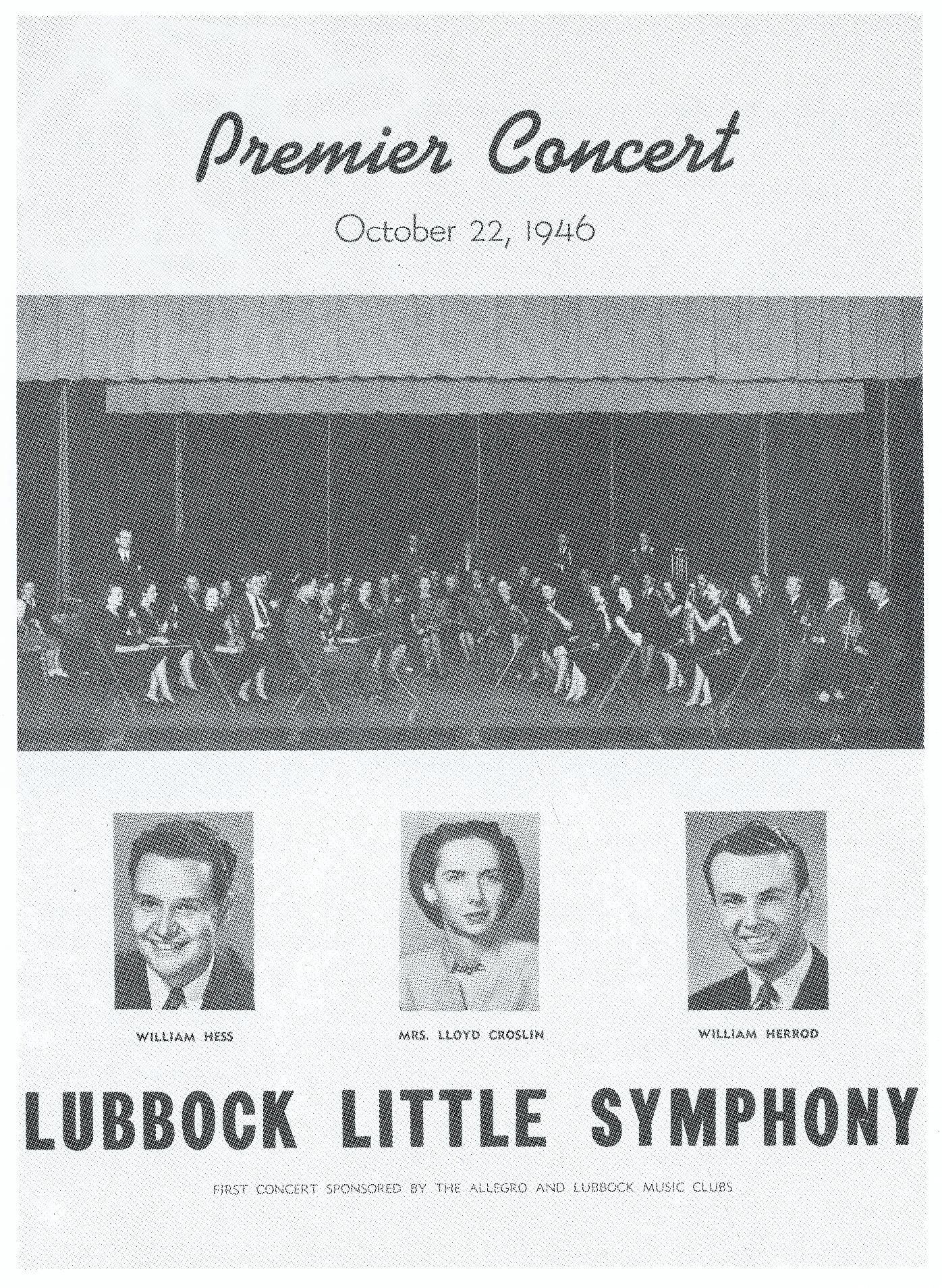
October 22, 1946
First Works Performed:
I. Symphony No. 1 in C Major | Beethoven
Last movement, Adagio, Allegro molto
II. The Enchanted Lake Ballet Suite | Tchaikovsky | 1. Scene, 2. Dance of the Swans, 3. Hungarian Dance
III. Piano Concerto in A Minor | Grieg
IV. Valse Triste | Sibelius
V. The Flower Song (from Carmen) | Bizet
Then You’ll Remember Me (from Bohemian Girl) | Balfe
Yours is My Heart Alone | Lehar
VI. Do Not Go My Love | Hageman
Awake, Beloved | Edwards
Silent as Night | Bohm
Visions | Sjoberg
MacGregor’s Gathering | Lee
VII. Bacchanale (from Samson and Delilah) | Saint-Saëns

The LSO Board of Directors in Dec. 1946
Miss Lois Alexander, Hanna Pope & Co.
Dean James G. Allen, Texas Tech University
Roy Bass, Lubbock National Bank
Mrs. Vera Chapman
Mrs. Bernice Carnahan, South Plains Music
Charles S. Carter, Hotel Lubbock
W.P. Clement, Texas Tech Registrar
Mrs. Lloyd Croslin
George T. Dale
Mrs. Sam Dunn
Mrs. Bryan Edwards
Mrs. Elois A. Elliott
Roy Furr
Mrs. W.A. Glover
Raymond E. Hamilton
Dr. Clifford B. Jones
G.R. Kennedy
Dr. Jack M. Lewis, First Presbyterian Church
W.D. McCarty, Adair Music Store
W.G. McMillan
C.E. Maedgen Jr., Lubbock National Bank
Retha R. Martin, Dunlap’s
Mrs. Raymond Marshall
Dr. Weston A. Petty
W.W. Rix
Dr. H. I. Robinson, First Methodist Church
C.H. Scales
Dr. Fred W. Standefer
Mrs. Waldo Trotter
Mrs. Gettys Tucker
included:
Miss Margaret Turner, Avalanche-Journal
Mrs. Arch Underwood
Dr. C.J. Wagner
Rex Webster
Clarence Whiteside
S.C. Wilson
Robert Wright
Sources
Hatfield, Mary V. “And These People Wanted a Symphony.” 40th Anniversary: Lubbock Symphony Orchestra Concert Program. October 1, 1985. | Leona Gelin Kent Papers, 1937-1971, Southwest Collection, Texas Tech University. | Lubbock Symphony Orchestra Program Archives. | Peoples, Curtis. “Bill Harrod and the Lubbock Symphony Orchestra.” In Hidden History of the Llano Estacado, P.H. Carlson and David Murrah (editors). Charleston: The History Press, 2017.
4
William A. Harrod Founding Conductor of the LSO
Excerpt from the Address to the ex-Presidents of the Lubbock Symphony Orchestra at a luncheon honoring Harrod on October 1, 1985.
Bill Harrod and the expresidents of the Lubbock Symphony - what a long fruitful association we have had. The relationship has had its ups and downs - from the president who wouldn’t attend board meetings to the many who worked their rears off to make something worthwhile of the Lubbock Symphony Orchestra.
I first heard of Bill as that young fellow from Lubbock Army Airfield (now Reese) who was marrying the beautiful Audrey Johnson. About this time, Leona Gelin had the idea that Lubbock needed a community orchestra and enlisted help from others. Dr. Jack Lewis was prevailed on to serve as temporary chairman until officers could be elected.
Officers were named, a business manager hired, and Bill Harrod was employed - unpaid - as conductor. Now, we were under way.
All that Bill had to do was put together an orchestra. There was nothing to build on - it was from the ground up. The music teachers furnished some names, but Bill had to seek the personnel he needed. Among those
recruited were the wife of a habadasher, teacher in a private school, furniture sales- man, advertising man, schoolteachers, and music teachers. It really was remarkable how well this group did from the start.
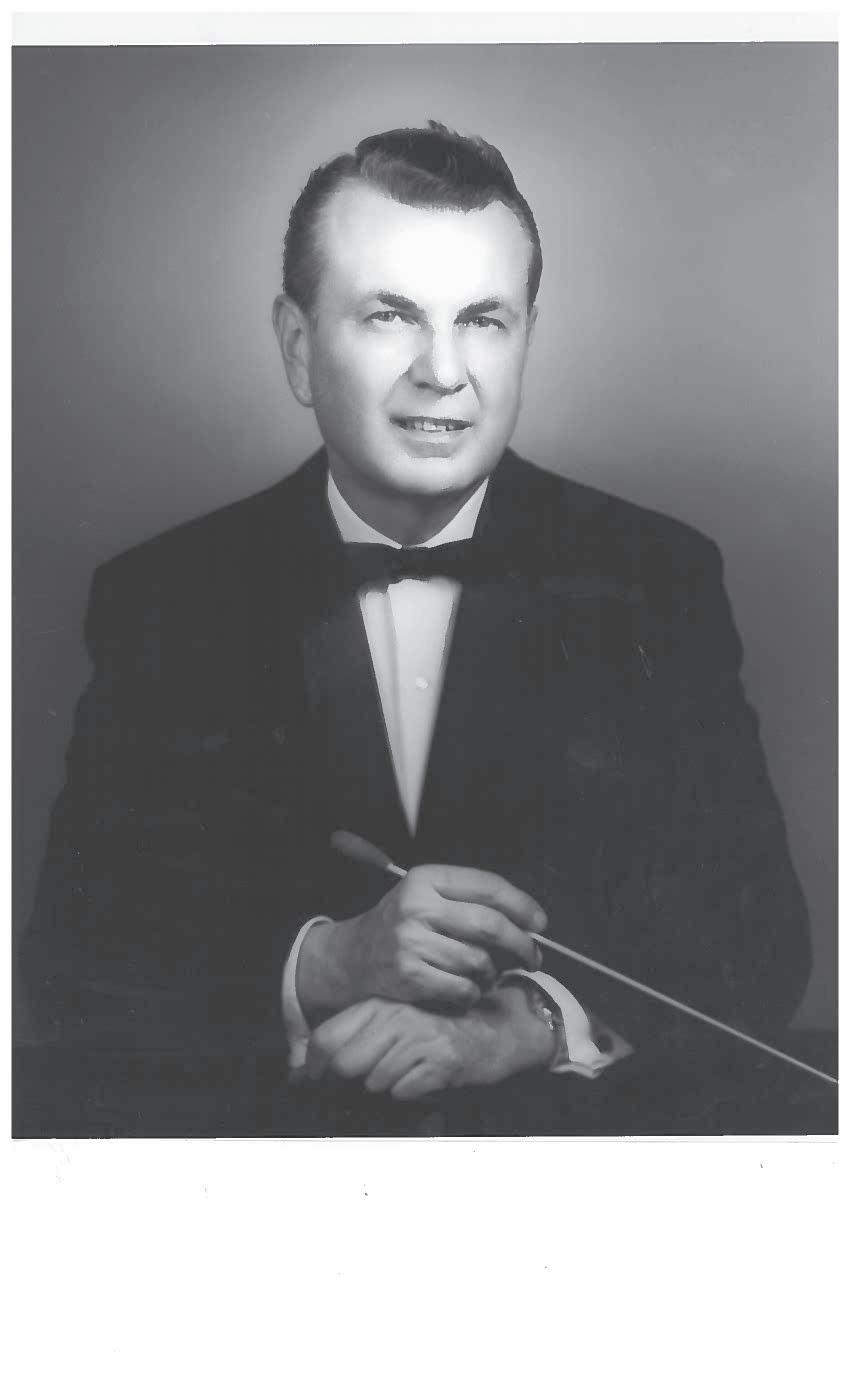
So, with a new group, a concert was arranged and Frances Croslin, wife of a young attorney, was our first guest soloist. Bill’s great talent to gauge the music he played to the skills of the musicians available has always been remarkable.
We had triumphs and we had problems. Remember the triumphant feeling when the Guild managed to buy a new podium for the conductor?
How about the time the Guild managed to finance a new long-tail coat for Bill? And later when the new shell was purchased.
Then we were hit with competition with a capital “C”. Midland and other cities wanted our musicians. Not only that, they had money and would pay mileage and for performing while we were a volunteer group. We barely had funds to pay Bill and Aileen Benson
and they were poorly paid – even for those days. It would be hard to pick the time of our greatest struggle. I think it was probably when Asher Thompson and Troy Myers were presidents and were trying to switch from volunteer to a paid orchestra. There were some heated sessions at board meetings but on Pops Nite in 1968 for the first time, the orchestra was paid.
During that turbulent period, the one steady factor was Bill Harrod. He went right ahead with putting the best he could recruit with the best they could play on stage. Often, some of his musicians would announce just before a concert that they had decided to play elsewhere. But we never cancelled a concert for any reason except two times and the weather was the cause then.
We all have memories of our experiences with Bill and perhaps we each have our favorite. Back in 1971, I was called by the Museum and sworn to secrecy about the “Action Awards” to be awarded at the 42nd annual meeting of the Museum Association. This award goes to outstanding
5
individuals or organizations who have been a force in furthering culture in Lubbock. It was my job to have Bill there, but he could not know about it in advance. I called Bill and told him that we had a rare opportunity to get some sorely needed publicity for the Symphony and on top of that, we would get a free meal for the two couples. With a parlay like that. it was too good to pass up.
Just ahead of my presentation to Bill, Dr. Wallace was being honored for his many books and academic honors. Bill didn’t suspect a thing until I was called on, pulled out my notes and went to the podium.
Bill later told me that as he realized what I was about to do, he wondered what I could say. The only thing he could think of was that he belonged to the Lions Club and Better Business Bureau.
I was honored to present one of the three “Action Awards” for that year to Bill Harrod for what he had done for Lubbock in the field of music personally and through the Lubbock Symphony Orchestra. Bill’s many friends throughout the Symphony world have meant much to Lubbock Symphony. Arthur Fiedler came to Lubbock for many years after he had quit coming to towns this size because he liked Bill and had a good time. Johnny Green and Carmen Dragon came through with arrangements and even artists that saved the day.
Bill, being a fine violinist himself, appreciates the problems of the soloists. Many guest artists have told me that Bill Harrod is one of the finest accompanying conductors in the country. No affectations, no test of wills, but they could count on a good solid accompaniment.
Just think of the many times that Bill has played the violin at weddings, funerals, and other events that affected our personal lives It would run into the hundreds without a doubt.
Bills greatest strength has been in threading that fine line between what the orchestra wanted to play and what the supporting public of Lubbock would pay to hear - and doing it with the money we had on hand. 40 seasons in the blackthat is no small accomplishment. There is only one reason we have a Symphony Orchestra in Lubbock and that is because Bill Harrod came our way at the right time. This group of ex-presidents knows it better than anyone.
Bill - we appreciate you and what you have done for us in these 40 years of Music. You are our friend. Thanks to you from all of us.
Personal Memories of the LSO from the children of William Harrod
Janice Harrod Ledbetter
One of the sweetest memories I have of attending the Lubbock Symphony was the pride I felt when Dad walked out onto the stage and lifted his baton to have the orchestra begin playing the Star-Spangled Banner. He had such grace and command.
Attending the Monday night concerts when in elementary school, I did not yet have an appreciation for classical music. However, when Pops Night arrived in the spring, it was such a magical night of Broadway, and familiar tunes performed by the orchestra and sung by professionals sounded exactly how it was heard on recordings. What joy it brought to our family!
Arthur Fiedler and Dad became good friends. When Mr. Fiedler would come to town as a guest conductor, Dad would be waiting with a bottle of Tanqueray gin at the airport. He would pour his friend a shot, and they would proceed into Lubbock and drive through the Tech campus so Mr. Fiedler could admire and appreciate “the most beautiful girls I have seen anywhere!!”
What an honor it has been reading the letters from past symphony presidents, LSO musicians, and friends praising William Harrod for his leadership of the symphony and his contribution to the city of Lubbock. One friend wrote, “Under your leadership, the Lubbock Symphony Orchestra has helped to make Lubbock a cultural mecca in the middle of a huge cotton field.” (Jim Barber)
Gary William Harrod
Dad was born in Des Moines, Iowa, and was one of 4 boys. His Father --William A Harrod (Dad was named after him), was a dentist, an oilman, and a musician. He played with John Philip Sousa (Stars and Stripes Forever) and his orchestra for many military functions. He was with that orchestra when they went to entertain the troops who were digging the Panama Canal. Unfortunately, his Father contracted malaria while in Panama and died soon after when Dad was only 14.
6

The family moved to Little Rock, and Dad finished High School and then left for New York to work with his older brother for many of the big named Bands in New York to help his mother financially with his two younger brothers. Dad played with Jimmy Durante and Jack Benny and often played in several of the Dorsey Brothers’ bands. When World War II broke out, Dad and his older brother, Ben, joined the Army/Air Force and spent time in France and other parts of Europe entertaining the British and American troops with the Arm Services Entertainment group. In 1945 Dad was sent back to the states and eventually was assigned to Reese Air Force Base, where he was later discharged. While performing at one of the musical events at the Base, he met Mom, and they soon were married and settled in Lubbock in a small house on 37th street. Dad’s brother Ben moved to Connecticut and then eventually to Fort Lauderdale, Florida, where he purchased the Otto Link company in 1960- the largest manufacturer of Brass and Woodwind mouthpieces in the world—likely many in the current orchestra use his product.
Dad was approached by a number of Lubbock City leaders and asked to consider forming an Orchestra in 1946—he did, and that year he started an all-volunteer orchestra which he was proud to direct for 40 years. During those years, many of the soloists were guests at our home following the concerts. My particular favorites were Ferrante and Teicher, who played a grand piano on stage and had recently received the Academy Award for the Theme from Exodus. Liberace, Richard Ellsasser—and greatest concert organist of all time; Van Cliburn, who had recently won the Tchaikovsky Competition in Moscow, and my favorite— Arthur Fiedler—conductor of the Boston Pops.
The Van Cliburn two-night concerts tickets were sold out months in advance. I was in the 8th grade and played football at Atkins Junior High. My coach was Bill Davis, and his wife was the music teacher there. Coach Davis asked me if Dad could get his wife a seat at one of the Van Cliburn’s concerts—Dad got her seats for each night, and on Wednesday, I got a new pair of shoulder pads!
Arthur Fiedler and Carmen Dragon—Los Angles conductor and composer of many motion picture soundtracks—helped provide many of the arrangements Dad used for Pops Concerts. Arthur Fiedler was a guest conductor at least five times, and each time my brother and sister and I were in the paper with our pictures with him. Many of the Pops Concerts had a patriot theme, and at Fiedler’s suggestion, the Star-Spangled Banner became the opening piece for not only Pops Night but every concert and Children’s concert the orchestra played. I recently came across a letter from Dick Richards (one of the early Board Chairman) who described a time when he joined Dad, Arthur Fiedler, and Jack Sheridan (fire arts writer for the Avalanche-Journal) on a tour of the South Plains building in Lubbock. Dad had them take the elevator to the top floor and then climbed the stairs to the roof—at some point, Fiedler asked Dad why they were up there—Dad said, “I always wanted to see Fiedler on the roof”!
People often said to me, “I so admire the fact that your father didn’t force music on you”—Unfortunately for me, he knew his own limits!
Thank you for honoring our dad in such a special way!
7
1946

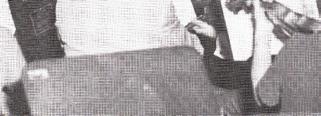

William Harrod founds the LSO, a volunteer orchestra.
1963
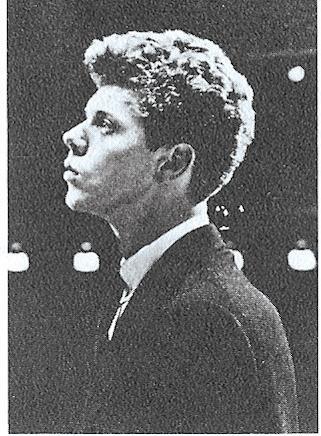
Pianist Van Cliburn performs with the LSO.
1985
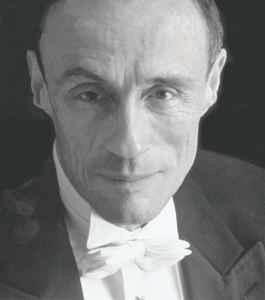
Conductor
Patrick Flynn joins the LSO.
1993
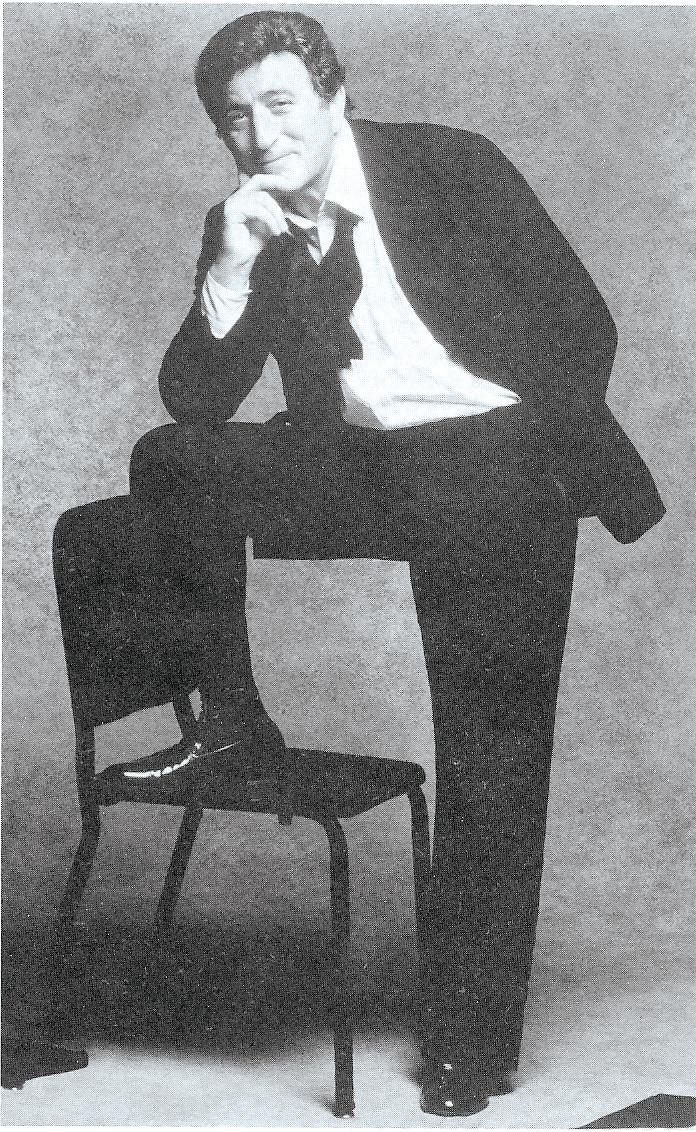
2001
Pop-singer Tony Bennett performs with the LSO.
Conductor Andrews Sill joins the LSO.
1952

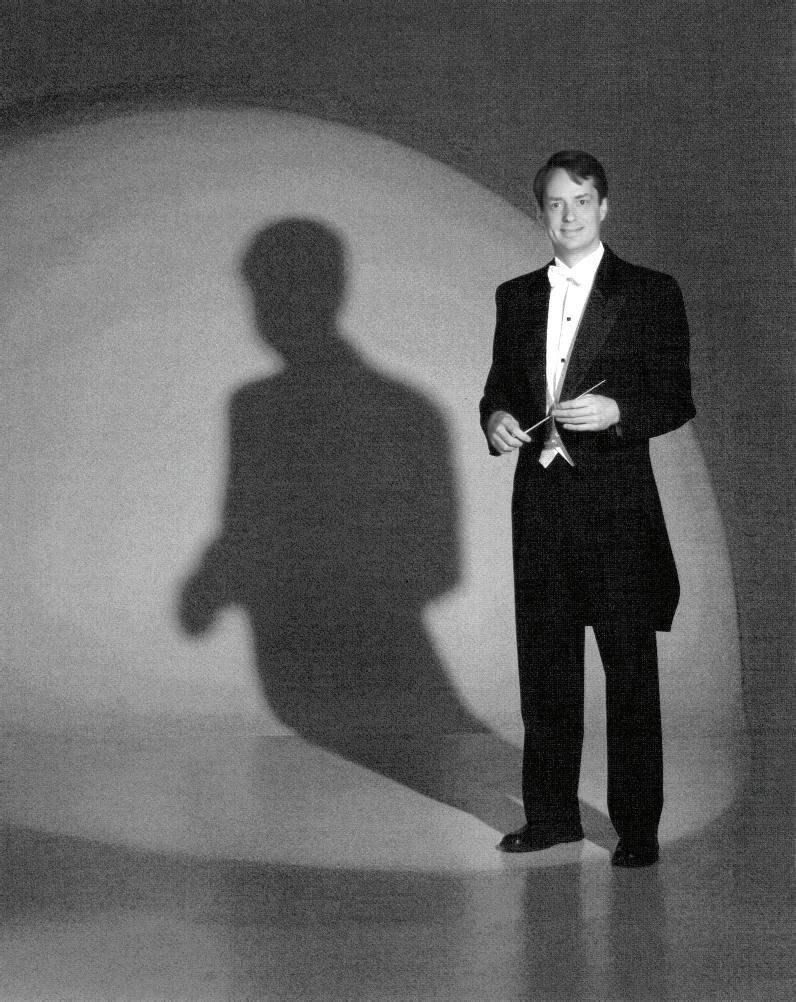
1967
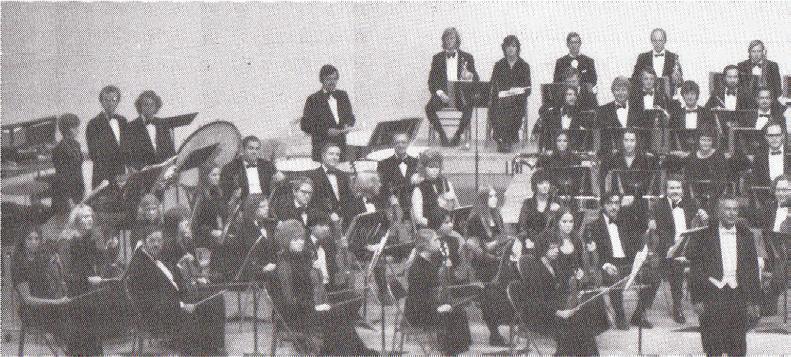
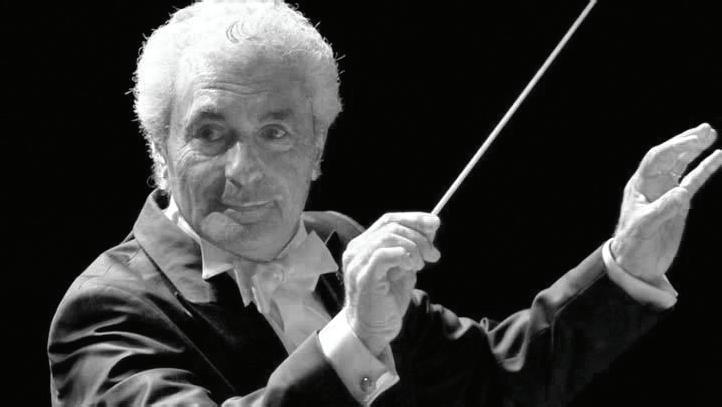
1994
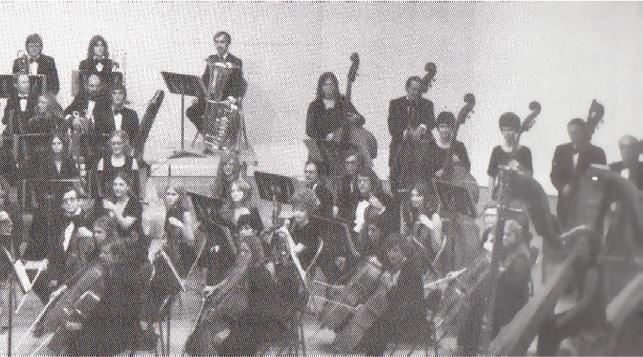
LSO becomes a professional, paid symphony orchestra.
Conductor Gürer Aykal joins the LSO.
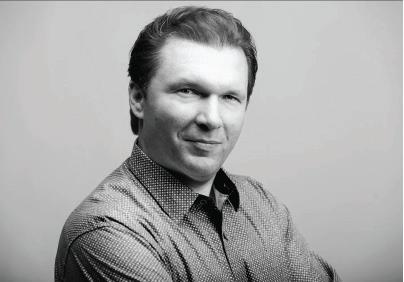

Conductor Albert-George Schram joins the LSO.
Conductor Tomasz Golka joins the LSO.
8
2007
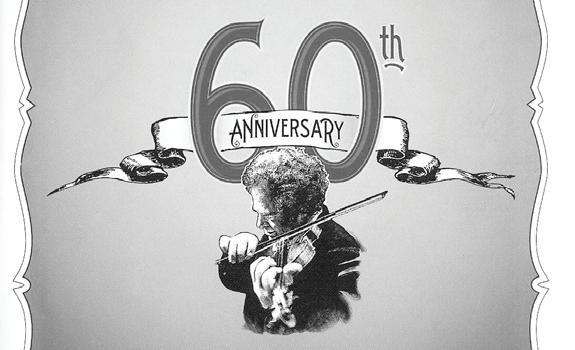
Ithzak Perlman performs with the LSO a second time, after first performing in 1984.
2012

2014
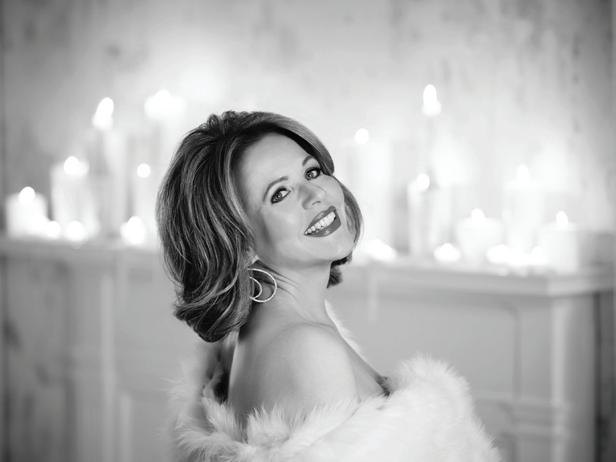
2018
2021
2010
Conductor David Cho joins the LSO.
Soprano Renée Fleming performs with the LSO.
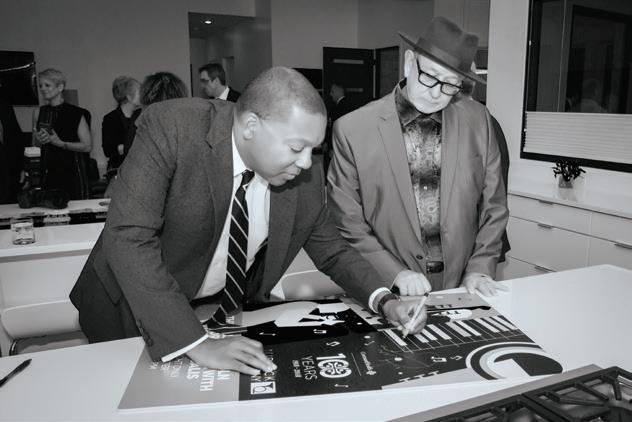
Wynton Marsalis and The Jazz at Lincoln Center Orchestra perform at the 2018 LSO Gala.
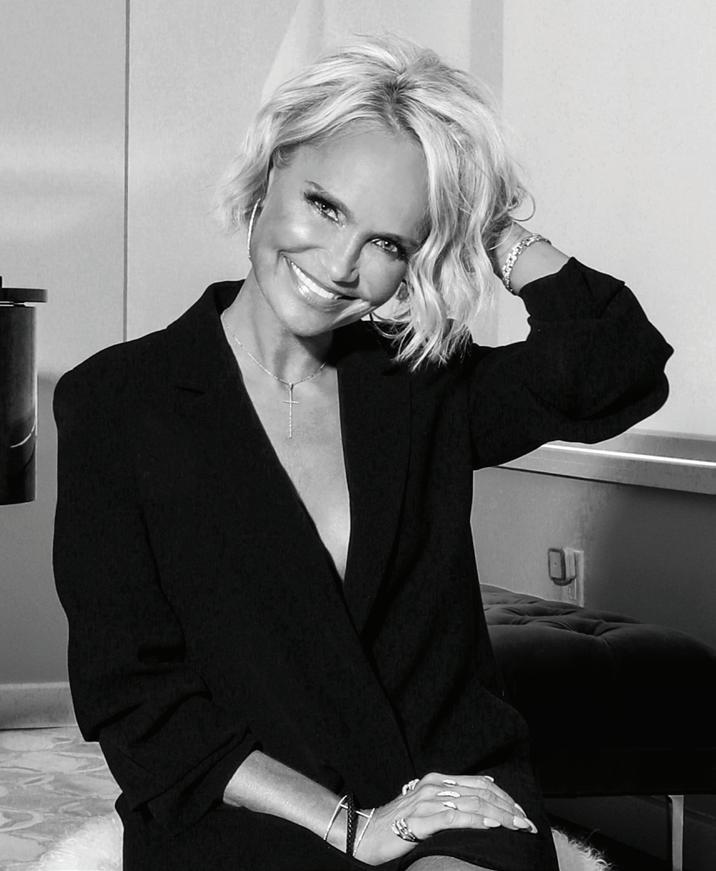
Actress Kristin Chenoweth performs with the LSO.
2012
2020
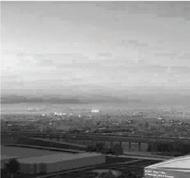
2016

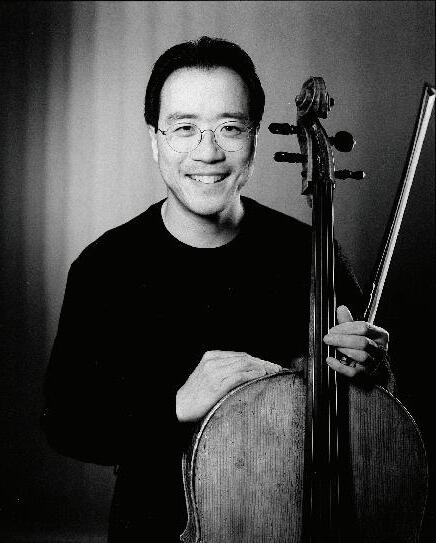
Mezzo-Soprano Susan Graham performs with the LSO.
75 years | 1946—2021 more to come!
Violinist Joshua Bell performs with the LSO.


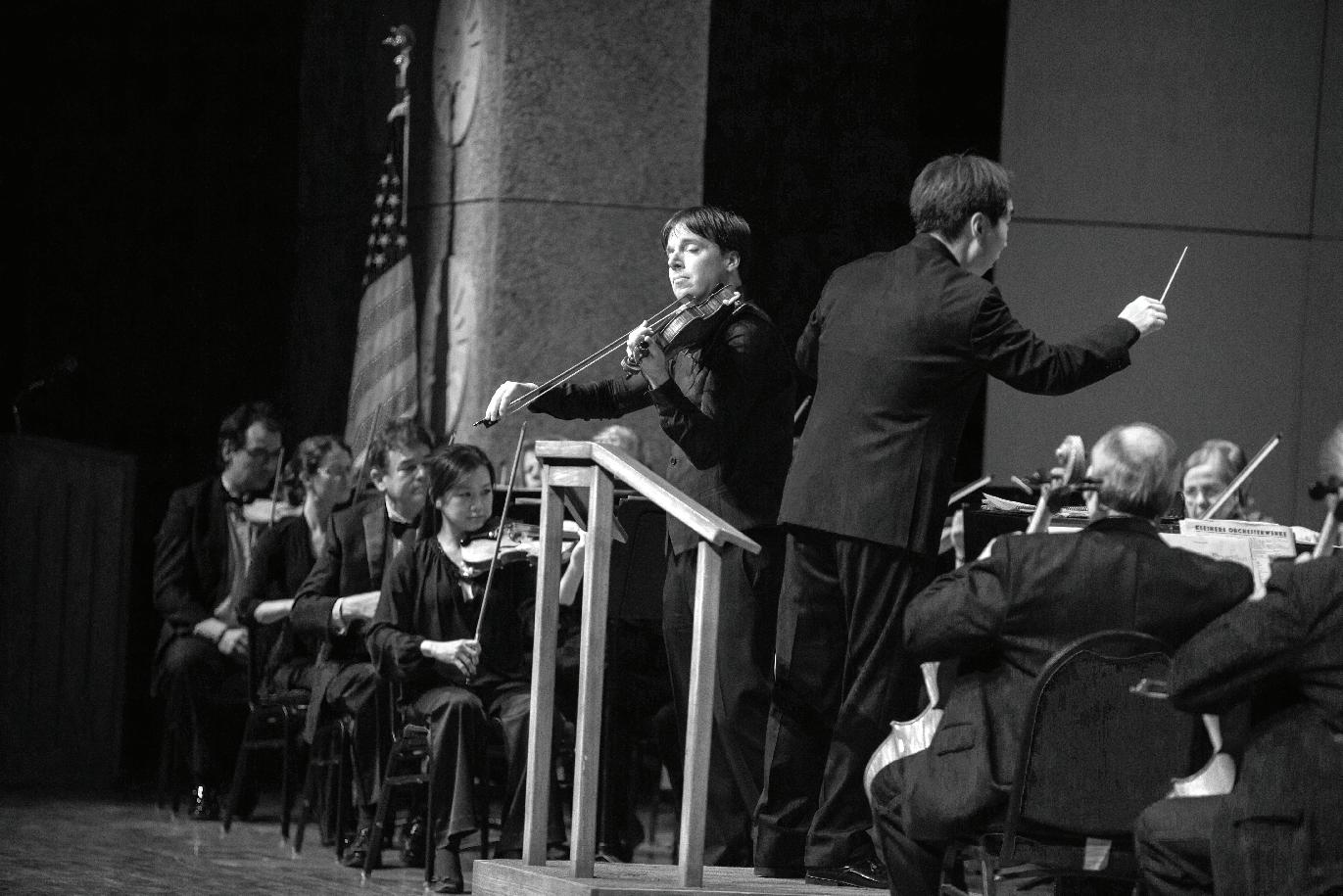
9
Fire in the Water, Earth in the Air: A Symphony of Songs
D. J.
Sparr, Composer;
Lyrics
by D.
J. Sparr
and Christopher J. Oglesby. Inspired by the book Fire in the Water, Earth in the Air: Legends of West Texas Music by Christopher
J. Oglesby
MAIN THEME CHORUS
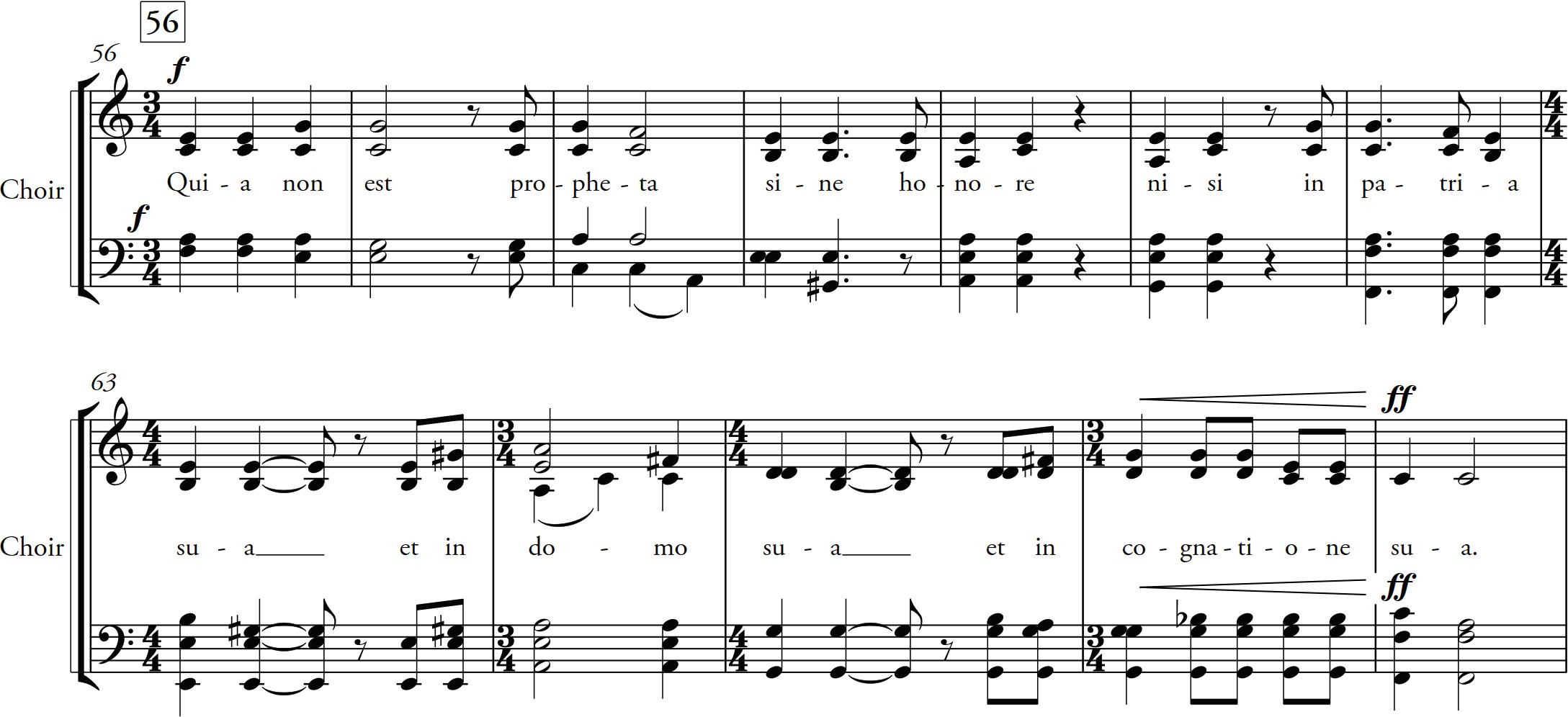
Movement I “Fire in the Water” Commentary
Sparr: On the first page of the score we find a sense of inspiration in long and expansive space, music with long notes that are vast and wide; this sense is what most influences me in Lubbock and the surrounding region. The piece opens with giant sounds from the three electric guitars and percussion, and then sustaining strings and winds remind us of the elements Fire and Water. This music informs a lot of the rest of the piece, everything from melodic snippets, to overall chord progressions in later movements.
The Main Theme Chorus, “Quia non est propheta sine honore nisi in patria,” is Latin translation of a verse in the Bible (Mark 6:4), which Oglesby quotes in English in the Introduction to his book. At the risk of being mildly subversive, this quote gives us two uses: 1) it is the very most classical thing to have a chorus singing in Latin in a classical piece; 2) the quote refers to the trope that a person is not appreciated in their own time and among those who know them familiarly.
Oglesby: In my Introduction to “Fire in the Water, Earth in the Air: Legends of West Texas Music” (University of Texas Press, 2006; ISBN: 978-0-292-71434-2; herein referred to as “the book”), I quote the words of Jesus spoken to his disciples in this context:
A verse from the Bible has resounded in my mind as I have studied the paradox that is West Texas music and art. “No prophet goes without honor, except in his own country and among his own kin, and in his own home.” (Mark 6:4) Perhaps any examination of conservative West Texas must begin with considering the Bible. (p. 5) I wrote that because it is true, both about my thoughts at the time and because it is apparent in the various life stories of many now-revered artists from West Texas.
10

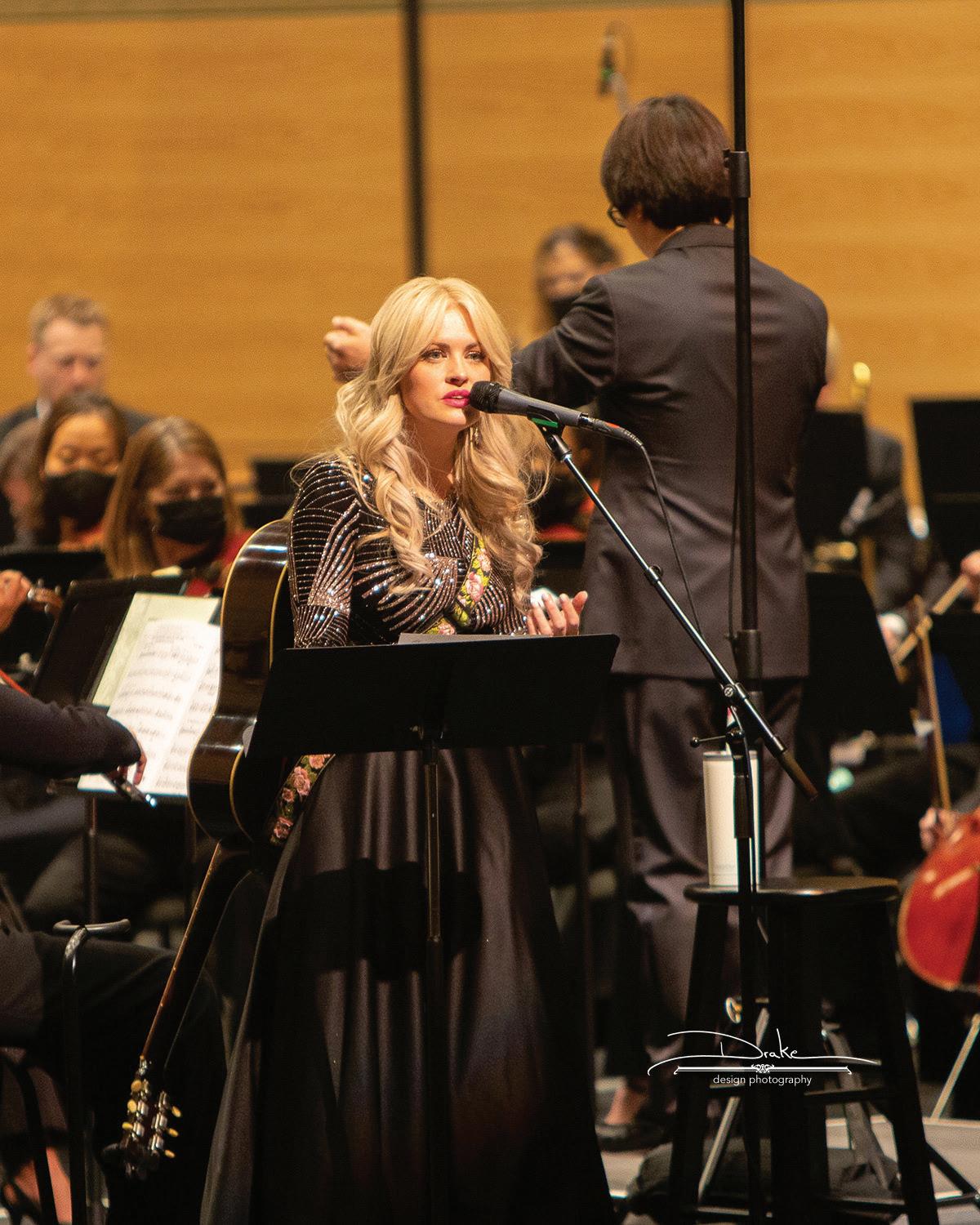
Hannah Jackson was the guest vocalist for the premiere of the symphony. She is a country singer and songwriter from Lubbock.
Movement II “Earth in the Air” Commentary
Sparr: For movement two, Oglesby had the idea of using the chapter sub-titles. He told me when he came up with the sub-titles, he thought of them as brief poems. So, I took them and put them in an order that – to me –told a story. Here, the movement opens with a nod to Beethoven Symphonies, specifically the wind chord that opens the second movement of Beethoven VII. And the twist from there is, then we add three electric guitars. That is a lot like the fire in the water! – Guitars are the fire and the orchestra is the water.
Oglesby: I did go to a good deal of trouble to fashion the sub-titles of the chapters in the book, because in my mind the subtitle of the book itself, “Legends of West Texas Music,” refers to the stories being told by the artists, not to some “legendary” status of any individual. To me, the sub-titles really are describing what each chapter was actually about. Then Sparr had the brilliant idea of removing all proper names, references to specific persons or places, in order to make the lyrics for the symphony more universal, which I think is truly inspired. I absolutely approve of the way D.J. arranged my original words into the lyrics, and that was all Sparr.
12
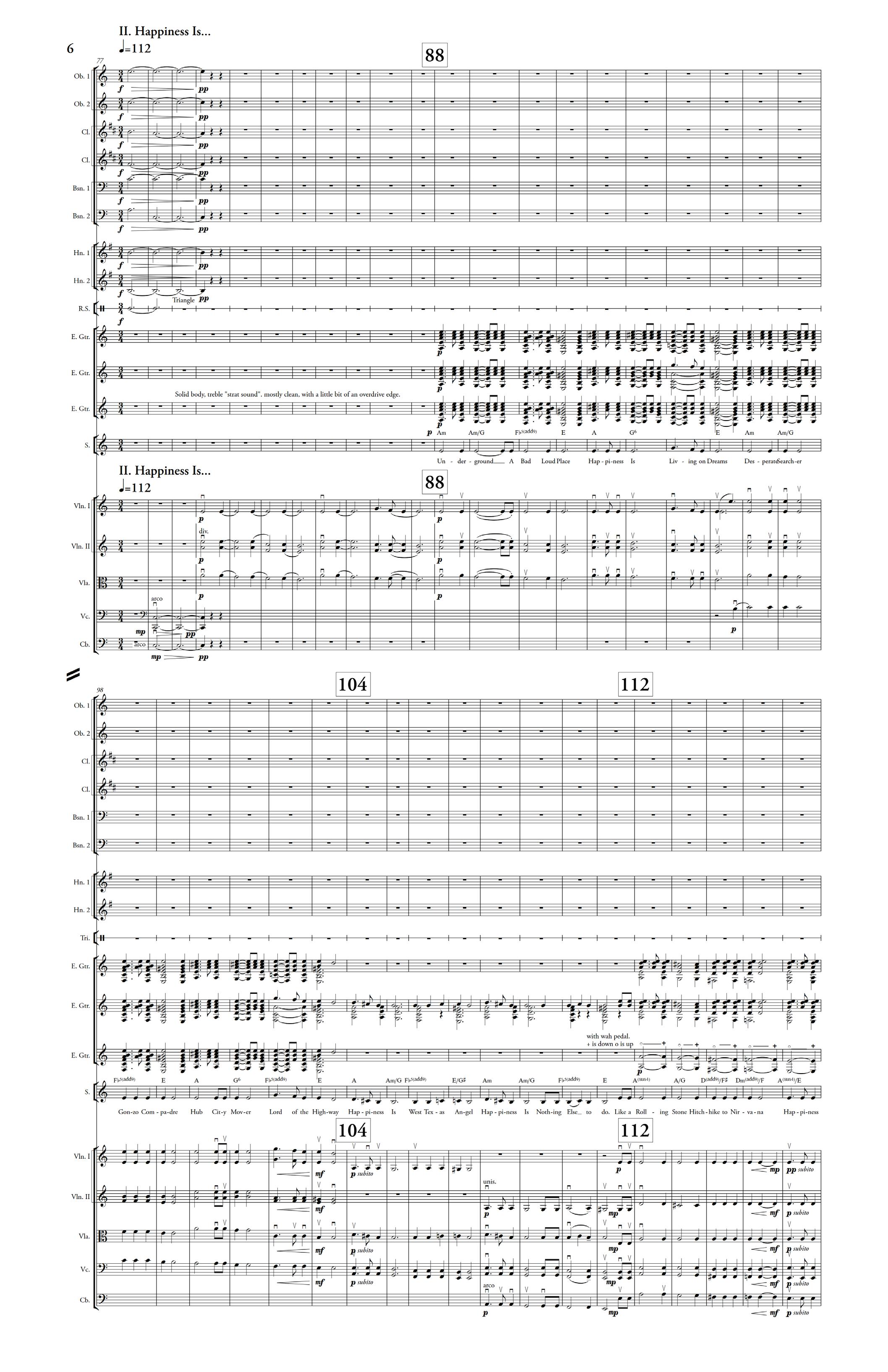
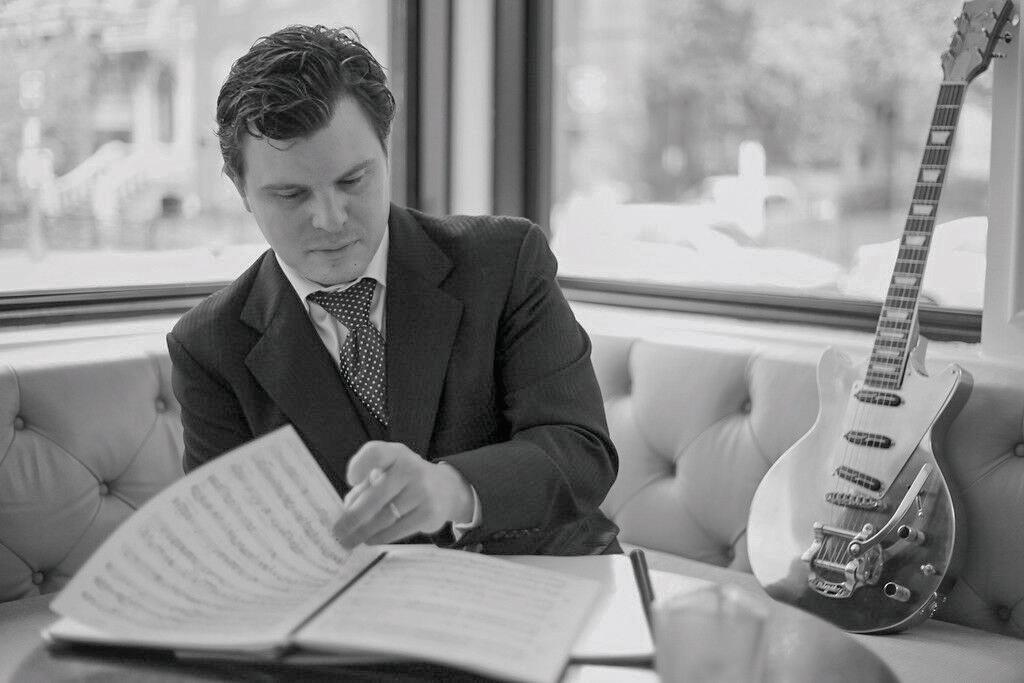
D. J. Sparr lived in Lubbock for seven years before moving to Baton Rouge, LA. He is a composer and electric guitarist.
Movement III “UFOs & Red-Heat Circles” Commentary
Sparr: This is a fun movement, with the strings echoing the soprano’s melody and huge orchestra outbursts. To me, those are the “angels punching through to the earthly plane.” Later, guitars with effects and reverbs and delays simulate the sound of space saucers and the orchestra uses lots of modern effects to give an otherworldly sound.
Oglesby: The UFO theme may be familiar to many West Texans as arising from the famed Lubbock Lights sightings in the 1950’s, to which several artists and myself refer in the book. Sparr cleverly culled various quotes made by artists interviewed in the book about the phenomenon, including fiddler Richard Bowden (p.33), designer Sharon Ely (p.128-129), and singer/songwriter Kimmie Rhodes (p.133). The last dream-like story section that begins, “…one afternoon at someone’s house dancing,” and ends with “…you are the center of the universe,” is pretty much a direct quote from a story in the book (p.149) that playwright & actress Jo Harvey Allen told to me about her own personal experience while growing up in Lubbock.

14

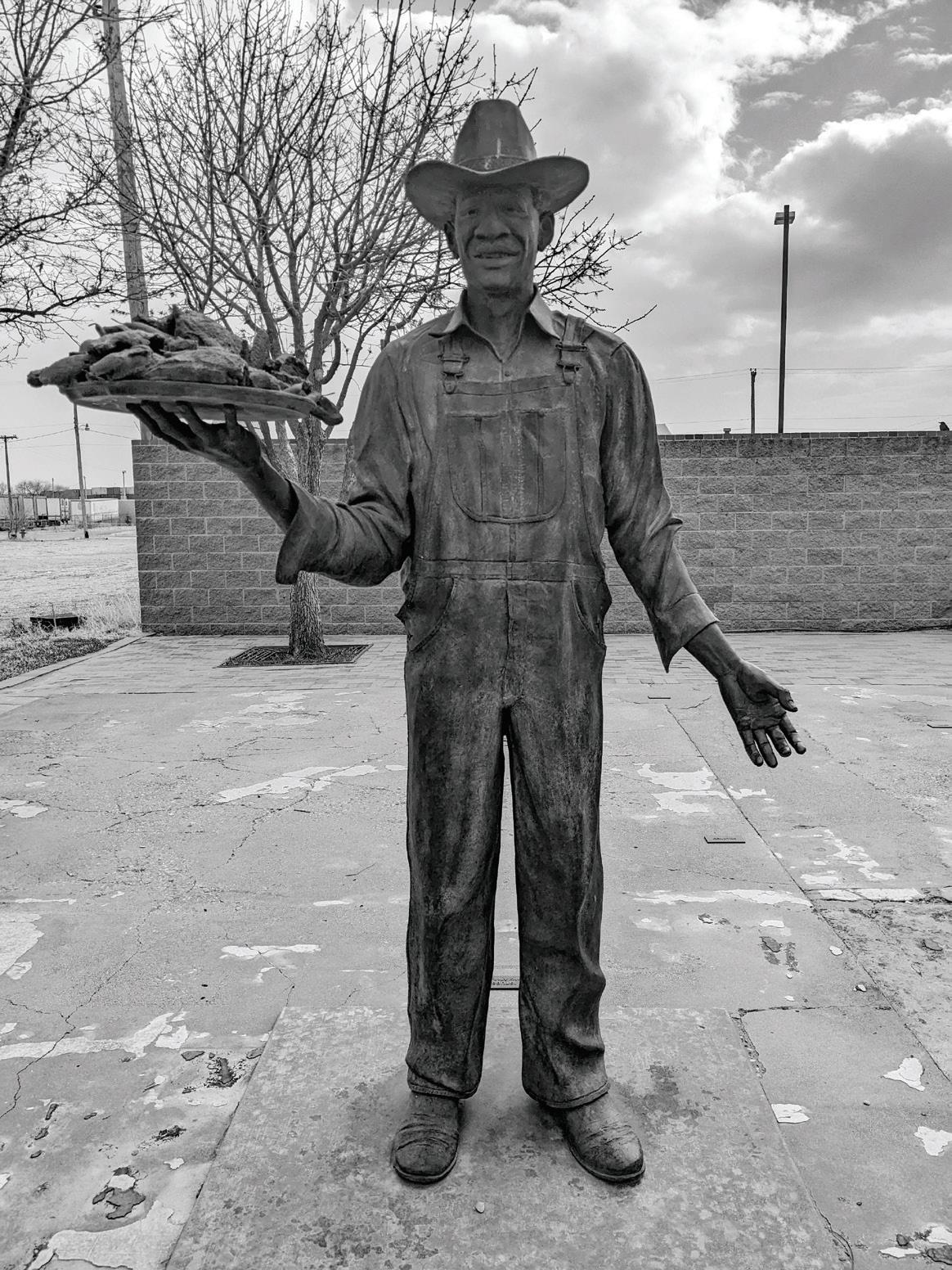
Statue of Christopher “Stubb” Stubblefield by artist Terry Allen, on the site of what used to be Stubb’s BarBQ in Lubbock.
Movement IV “Bad Loud Place” Commentary
Sparr: This movement is based on a blues guitar figure which I turned into a more “major” sounding pattern, inspired by the stories I read about Stubbs BarBQ and the bands that played there. Here, the singer and the chorus have a back and forth, saying “There will be no BAD talk or LOUD talk in this PLACE,” which are the famed words stenciled on a sign in Stubb’s BarBQ. The words “BAD,” “LOUD,” and “PLACE” were all emphasized in red letters on the sign, while the other words were in black.
Oglesby: The only topic which I absolutely insisted to Sparr that we touch upon in our symphony was Christopher B. Stubblefield, better known as Stubb, of Stubb’s BarBQ, which was originally located on East Broadway in Lubbock. Stubb’s influence on the music community in Lubbock and beyond cannot be overestimated, and his importance in that regard is perhaps not as notorious as it should be. Many artists in the book refer to Stubb as both a wise mentor and a loyal friend. In our lyrics, Sparr really cut to the core of the issue by using a statement in the book made by songwriter & artist Terry Allen (p.22), so I say Bravo to D.J.!
16
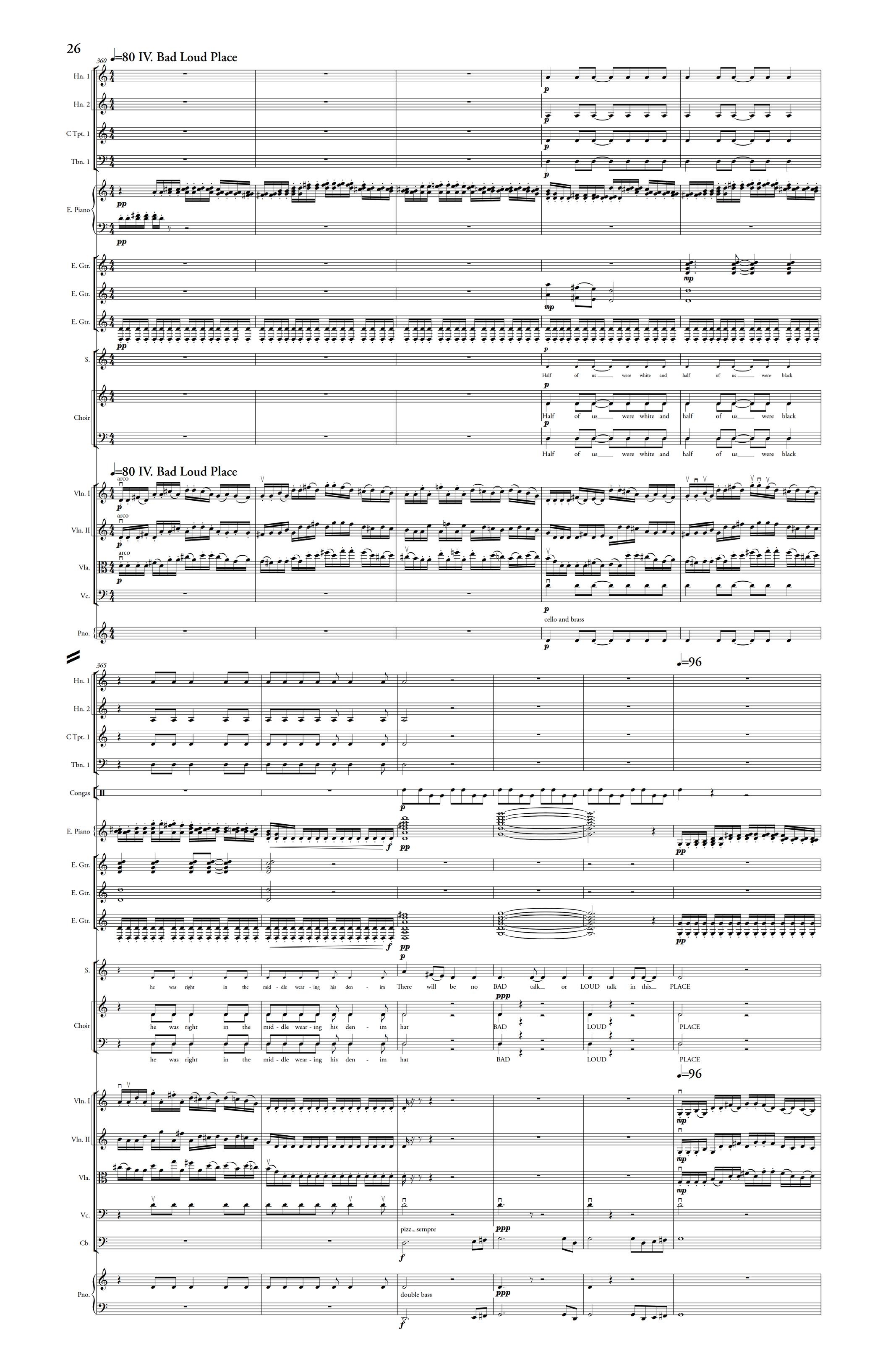
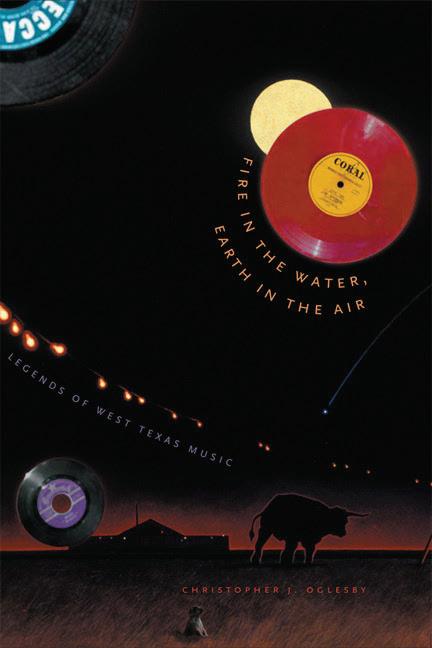
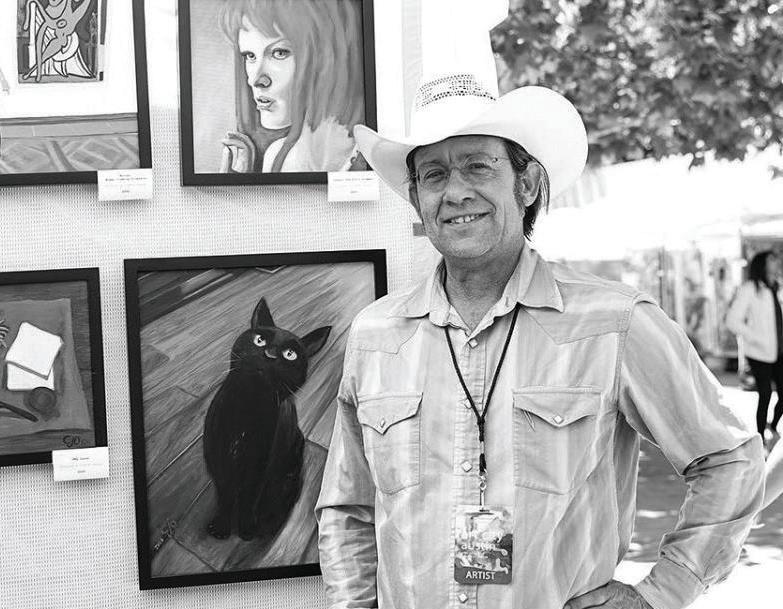
Movement V “A Zen Thing” Commentary
Sparr: This movement takes the opening harmonies of the piece – expansive open sounds –and really runs with it. The chorus holds mystical chords, and then the singer comes in on top with the melody which is reminiscent of the opening chorus melody we saw above.
Oglesby: The lyrics here are a quotation of an observation made to me by true country/rock legend Joe Ely (p.166-177), who is known to have quite a way with words. So the lyrics of this movement are pretty much all thanks to Joe Ely.

18
Christopher J. Ogelsby is a writer and artist raised in Lubbock. He is now based in Austin, TX.
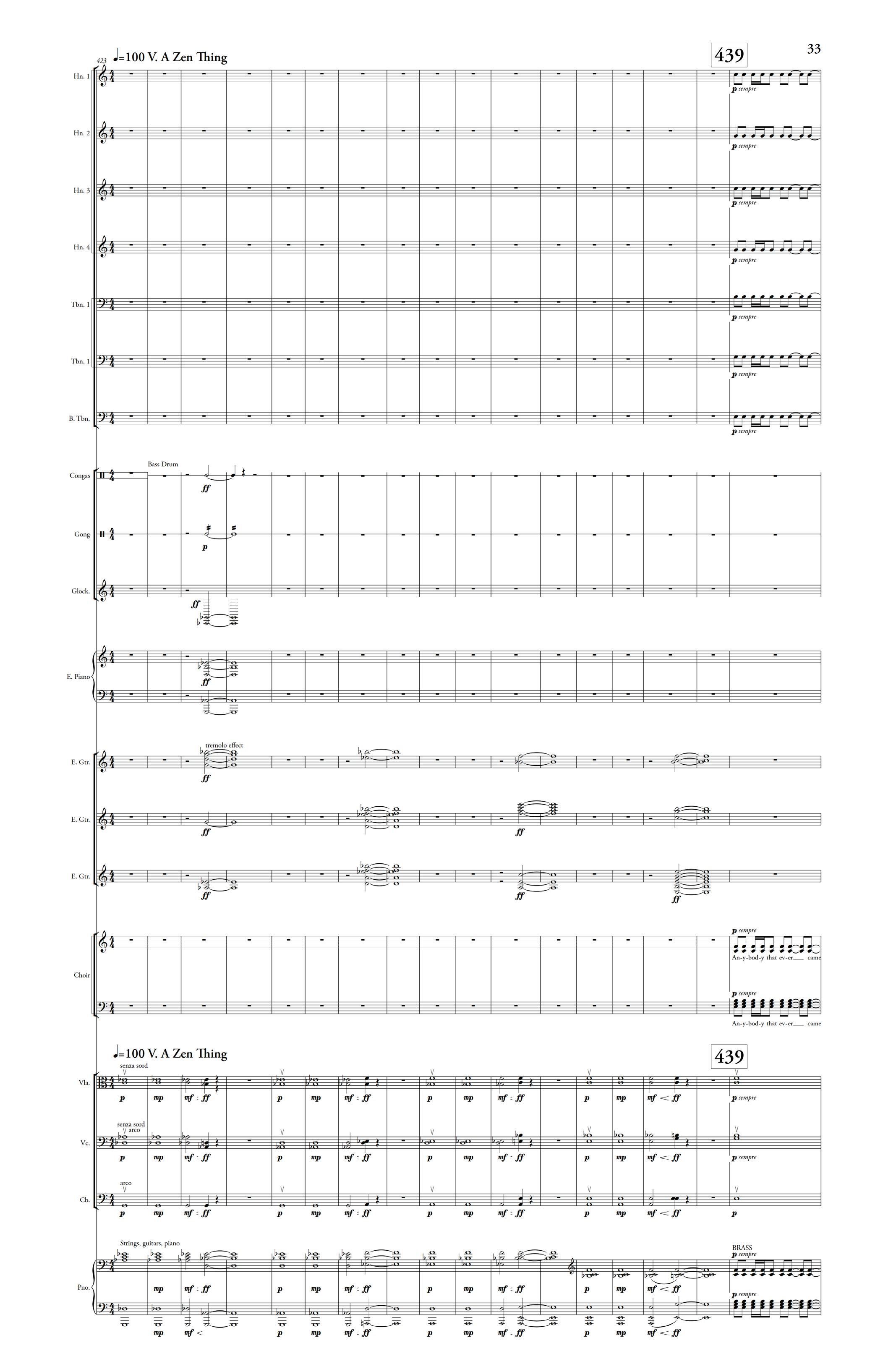

Movement VI “Music and Dance” Commentary
Sparr: This movement I composed to be most like a straight country song with a simple melody. One of the biggest influences on this movement is the song “Bloodlines” by Terry Allen. Here, the symphony and keyboard have a chord progression – the previous complications have been stripped away - and we get exactly the thing that is so great about Lubbock…the kindness and simplicity.
Oglesby: The lyrics of the final movement are, for the most part, words written be me, or paraphrased by Sparr, from the final paragraph of my Introduction to the book (p.8). All I can say, is that I mentioned in passing to D.J. that I was particularly proud of my composition of that paragraph and that I found it fairly lyrical itself. I am honored that he agreed and chose to include many of those words in the final movement of our symphony.


20
The Lubbock Chorale also performed at the premiere of the symphony.

A Letter from Maestro David Cho
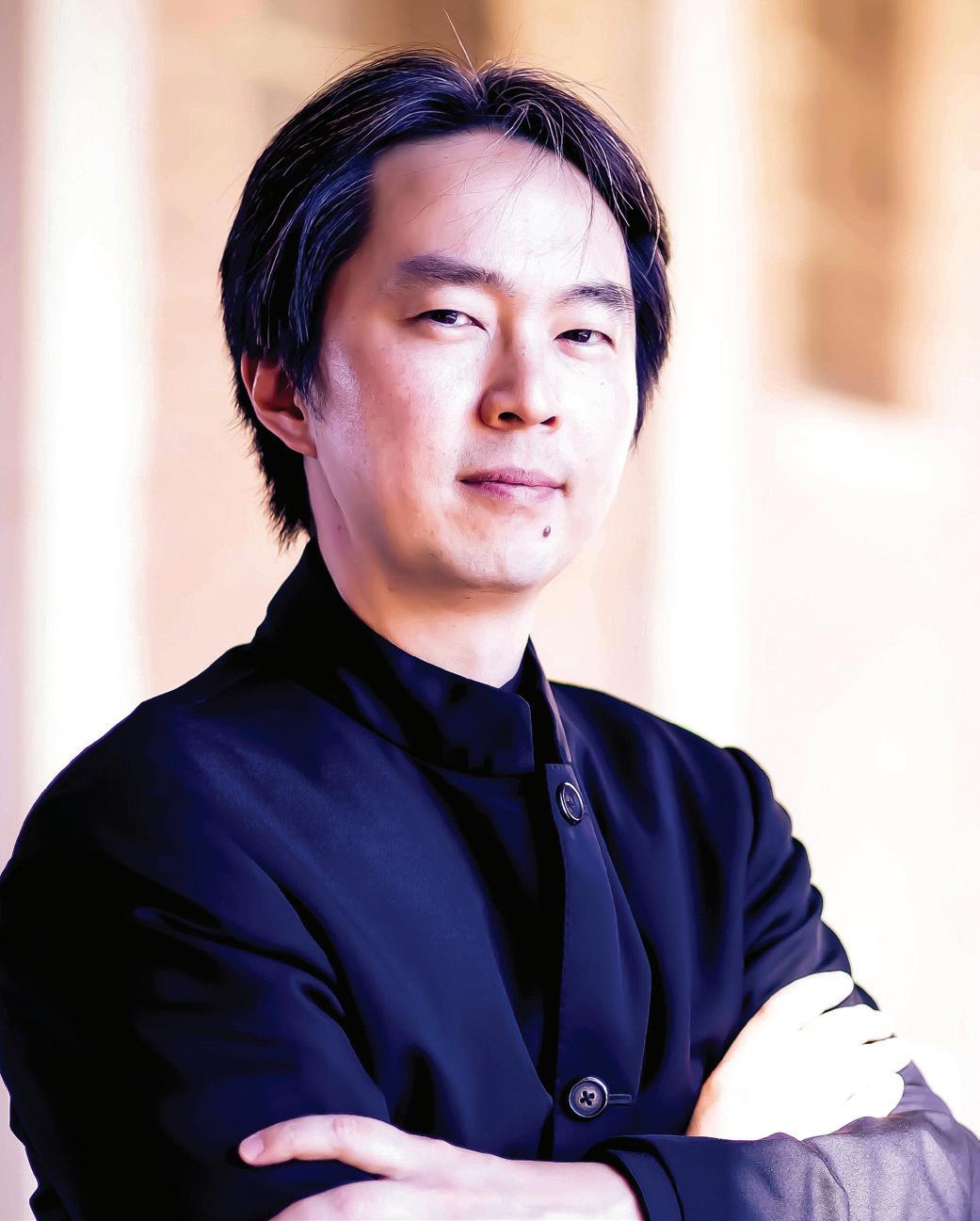
Dear Friends of the Lubbock Symphony,
With the most heartfelt congratulations I express my love and gratitude for this great orchestra, the Lubbock Symphony.
It has been eleven years since my arrival here in the South Plains. I had heard of the wonderful community of the arts, higher learning, and the medical system.
Lubbock is the crown jewel of the State of Texas. Tucked away in the panhandle, this city and its various organizations have important part of the cultural and community fabric.
Music has an incredible mission. Whether it is to provide healing for our souls, or to educate our youth: the Lubbock Symphony will help carry that vision through the next decades and centuries to come.
My sincere gratitude to all who contributed to the existence of the this fine organization and to those who helped the commemorative book into realization.
Warmest regards,
David Cho

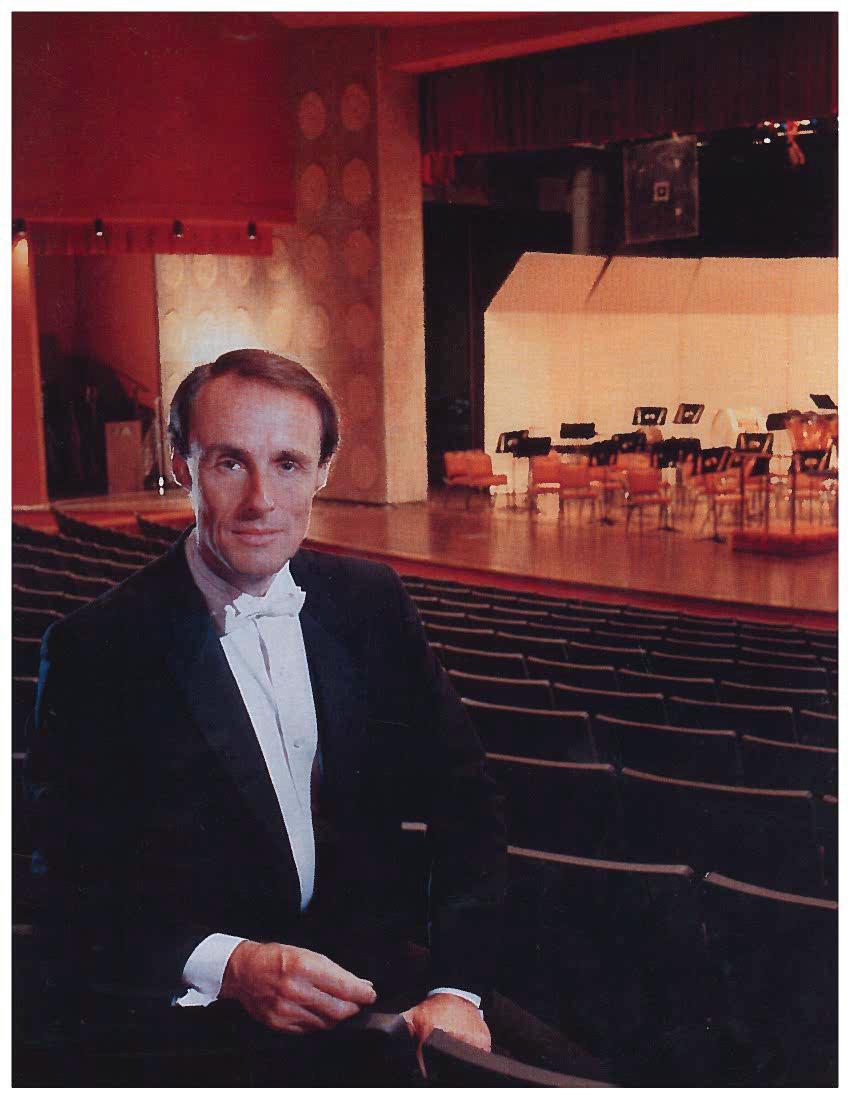
Past Conductors of the Lubbock Symphony
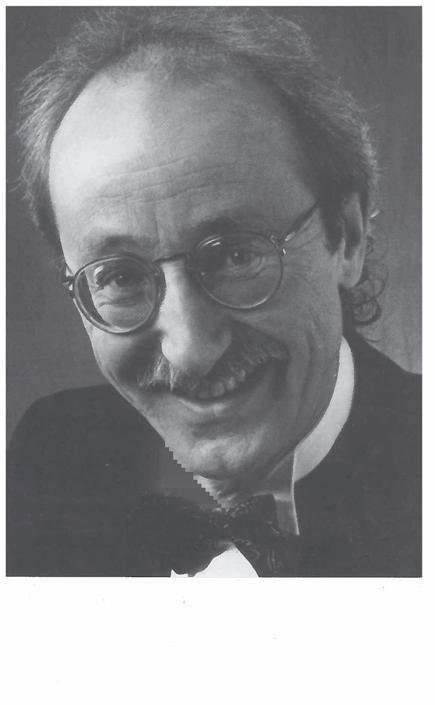
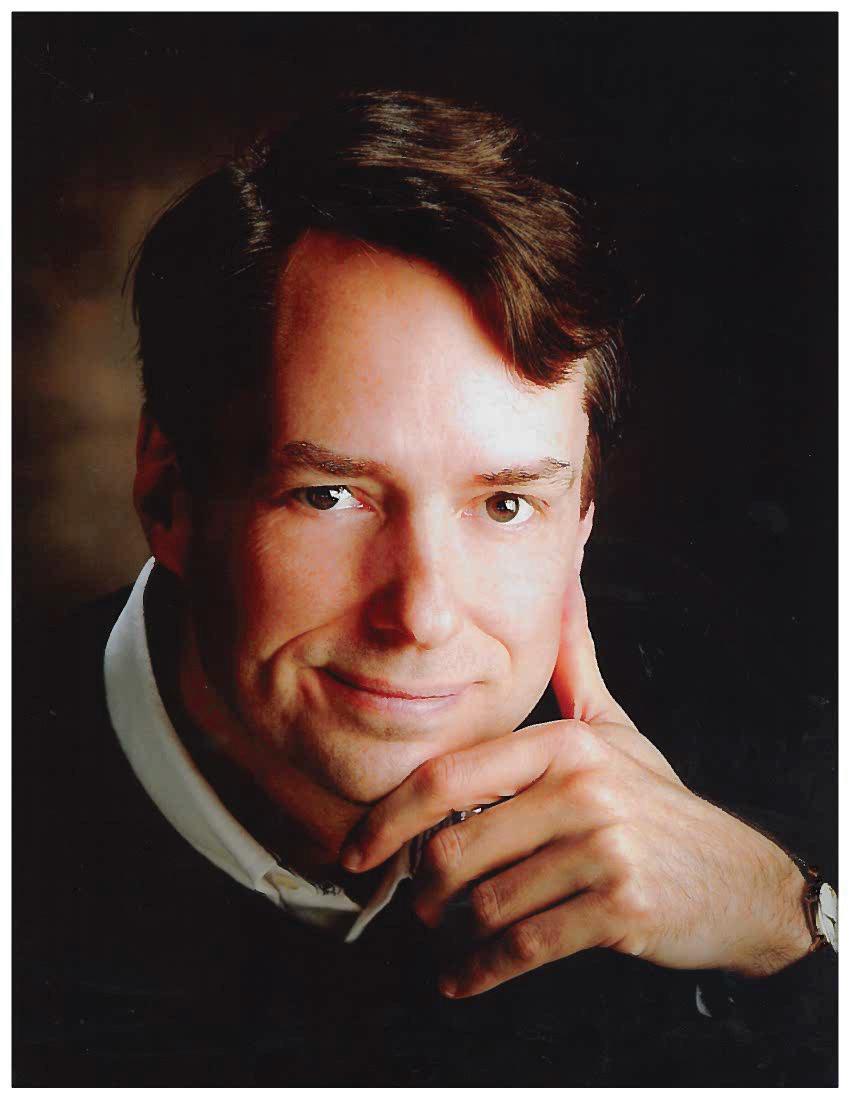

William Harrod 1946-1984 Patrick Flynn 1985-1986 G Ü rer Aykal 1987-1993 George Schram 1994-2000 Andrews Sill 2001-2005 Tomasz Golka 2007-2012
The Lubbock Symphony Orchestra’s “Tiny Piano”
Originated by Jack Sheridan & Donated by John Gillas
During the years of 1966 to 1972, Jack Sheridan was the fine arts editor and critic for the Lubbock AvalancheJournal. He was also a strong supporter of the Lubbock Symphony. When famous artists came to perform in Lubbock or with the Symphony, Jack would have them autograph his toy piano. After Jack's passing, he left the piano to John Gillas, former director of the Texas Tech Music Theater. Mr. Gillas kindly donated the piano to the Lubbock Symphony for the historical archive.
Autographs include:
James Tocco
Jeffrey Siegel
Lili Kraus
Donald Vorhees
James Dick
William Steinberg
Carlos Montoya
Kurt Overhoff
Liberace
Doc’ Severinson
Arthur Fiedler
Van Cliburn
Alicia de Larrocha
Johnny Carson
Ozan Marsh
Claudio Arrau
Ferrante & Teicher
William Harrod
Bob Hope
Grant Johannesen
Mitch Miller
David Bar-Illan
Rosalyn Tureck
Howard Hanson
Daniel Barenboim
Henri Aubert
Lukas Foss
Mildred Dilling
Grace Lynne Martin
Lawrence Welk
Robert Fizdale
Arthur Gold
Eugene Istoman
Mary Costa
Jorge Bolet
Rudolf Firkušny
James Drury
Kristen Chenoweth
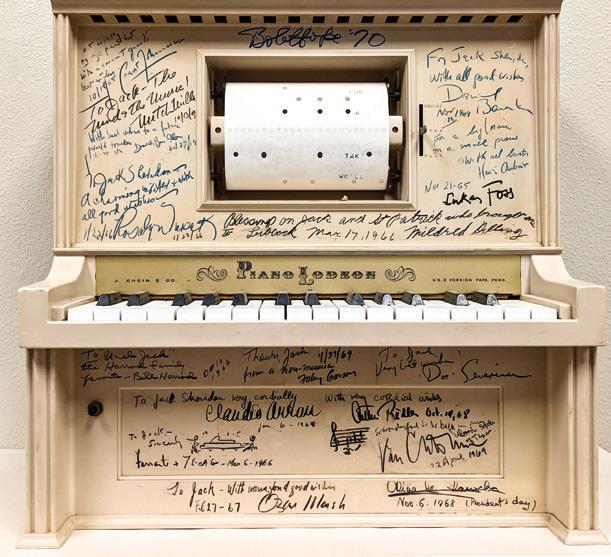

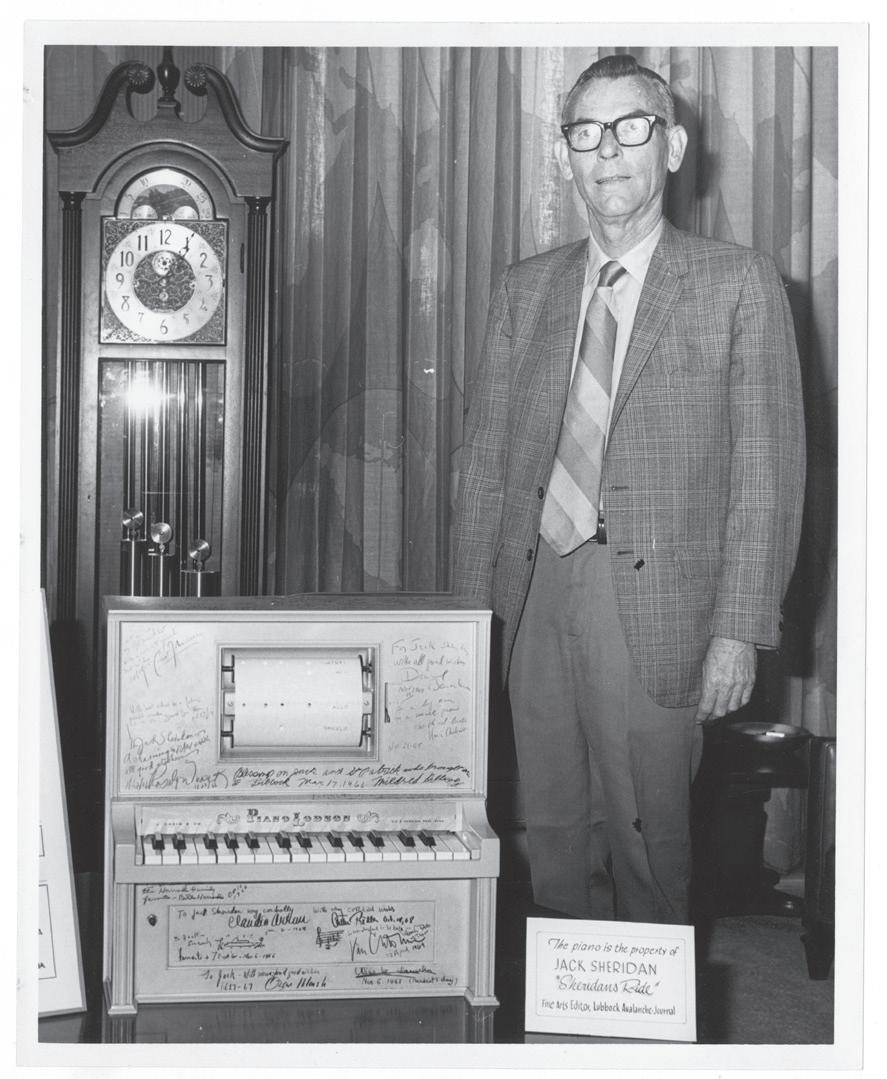
Signers who performed with the LSO include:

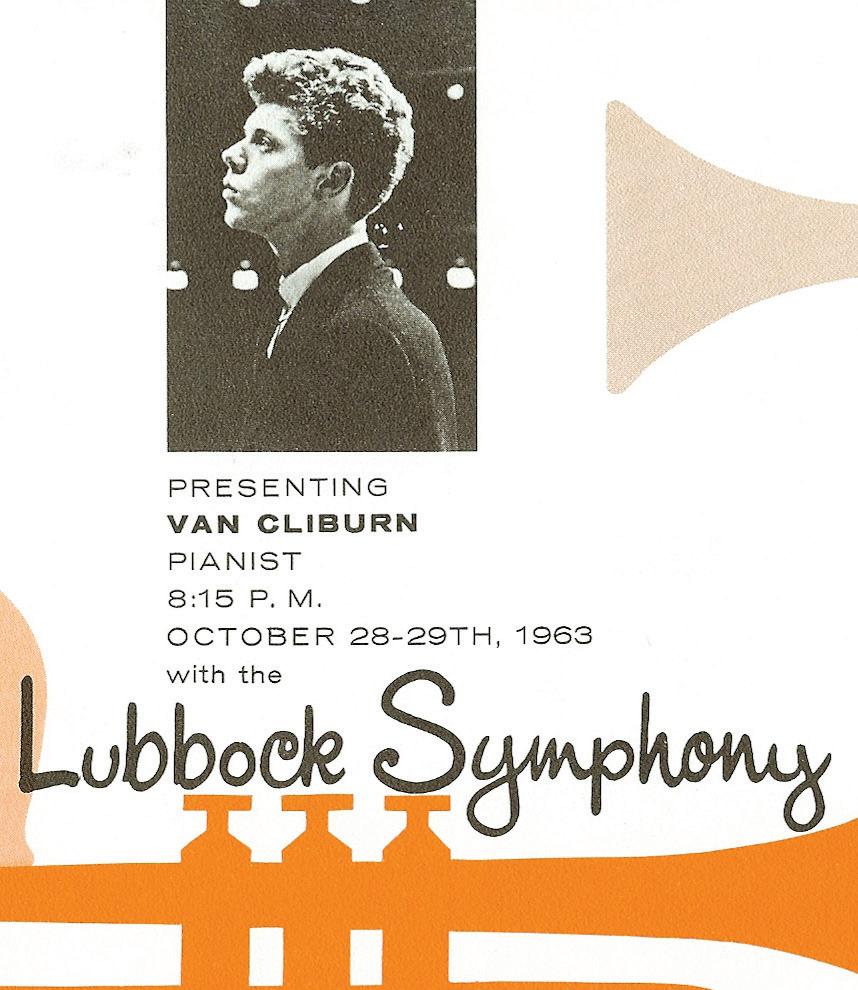
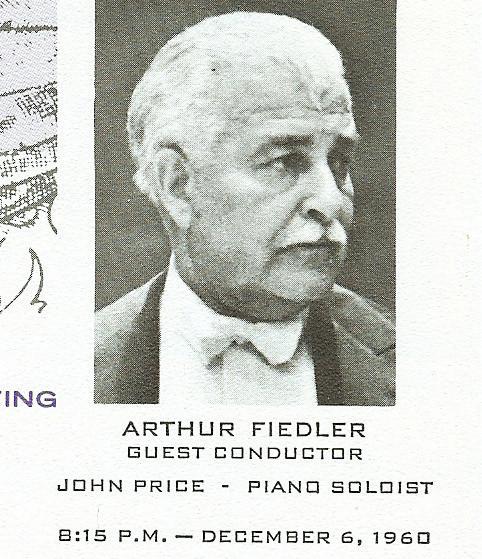
23
Daniel Barenboim Pianist
Van Cliburn Pianist
Arthur Fielder Guest Conductor
Jack Sheridan Originator of "Tiny Piano."
John Gillas Donated "Tiny Piano."
Photo courtesy of Texas Tech University Southwest Collection
LSO Staff
Special Thanks To
OFFICERS Brian Willcutt Chair Toni E. Wallingford Chair Elect Katie Salter Treasurer Jill Stangl Secretary Heather Hocker Immediate Past Chair DIRECTORS Steve Balch Dolle Barker Dustin Baucom Gilbert Berdine Leen Borno David Cho Covar Dabezies Patty D’Alise Michael Epps Stephen L. Faulk Lisa Garner-Santa Elias Ghandour Gurdev Gill Brad Green Erin Gregg Sandy Henry Leslie Huckabee Amy Hunter Elena Ilyushyna Thivakorn Kasemsri Neil Kurtzman Larry Landusky Paula Loveless Barry McCool Mallory Miler Mary Moran Judy Poffenbarger Melissa Pridmore Keli Ramsey Abi Rhodes Annette Sobel James St. Clair Jeremy Steen Robin Talbert Russell Thomasson Davor Vugrin Pat Wheeler
LSO Board 2021-2022
Galen Wixson President & CEO David Cho Music Director Jake Quintanilla Marketing Director Amelia Jamieson Graphic Designer Corey Dolter Operations Manager Emily Gavaghan Manager of Patron Services Gary Hudson Personnel Manager Jess Jackson Director of Development and Communications Kea Beasley Education Director Suzanne Rasco Director of Accounting Hannah Macgillivray Librarian Alexa Frederick Librarian Intern Callie Watson Graphic Design Intern Jordan Parks Marketing Intern Anterian Gee Marketing Intern
Laura Flanagan, Janice Harrod Ledbetter, Gary William Harrod, D. J. Sparr, Christopher J. Ogelsby, Arthur E. Gamble, Texas Tech University Southwest Collection


























































